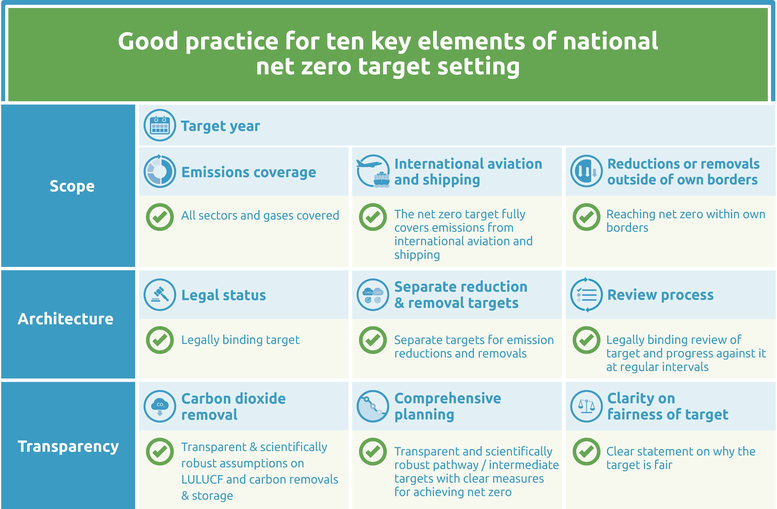Net zero targets
Summary
We evaluate the net zero target as: Poor
Australia included its target to achieve net zero by 2050 in its updated NDCs in October 2021 and June 2022. The 2022 Climate Change Act enshrined the 2050 target in the law.
Australia is preparing a new Net Zero Plan. Its current long-term emissions reduction plan for achieving net zero emissions by 2050, submitted to the UNFCCC as a Long-Term Strategy (LTS), was published in October 2021. The current strategy only reduces emissions by 60% below 2005 levels, excluding LULUCF and offsets. Overall, the plan relies heavily on the future development of low-emissions technology and domestic and international offsets with no plans to phase out coal, curb fossil fuel exports, or hold heavy polluters accountable.
The Climate Change Authority (CCA) released its Sectoral Pathways Review in September 2024, which presents emissions reductions pathways to net zero by 2050 encompassing all sectors across the Australian economy (Climate Change Authority, 2024b). The document includes a scenario described as compatible with the goal of limiting global temperature increase to 1.5°C by the end of the century, with domestic emissions reductions of 75% below 2005 levels by 2035, and net zero emissions by 2040. Together with CCA’s forthcoming 2035 targets advice, the sectoral pathways will be used by the government to inform its updated Net Zero Plan.
Ten key elements
Scope
- Target year – Australia aims to reach net zero by 2050.
- Emissions coverage – The target covers all GHG emissions (i.e., the 7 Kyoto gases: CO2, CH4, N2O, HFCs, PFCs, SF6, NF3) and all sectors of the economy (Australian Government, 2021d).
- International aviation and shipping – The target excludes both international aviation and shipping (Australian Government, 2021).
- Reductions or removals outside of own borders – Australia intends to rely on international offset credits to meet its net zero target. Australia’s Long-term Emissions Reduction Plan indicates it plans to rely on international and domestic offsets for 10% of needed reductions to reach net zero by 2050.
Target architecture
- Legal status – Australia included the net zero target in its Long-term Emissions Reduction Plan submitted to the UNFCCC as Australia’s LTS (Australian Government, 2021a). The 2022 NDC update aims to formalise its targets in legislation.
- Separate reduction & removal targets – Australia does not provide separate emission reduction and removal targets.
- Review process – Australia has a non-legally binding process in place to review the net zero target itself and intermediate targets. The Climate Change Authority has to publish an annual statement tracking progress made on climate change. The Long-term Emission Reductions Plan states the plan will be refined through five yearly ‘review and refine’ cycles.
Transparency
- Carbon dioxide removal – Australia does not provide transparent assumptions on carbon dioxide removals. The Plan assimilates land-based domestic offsets and international offsets to CDR despite the issues surrounding offsets in Australia (see section on Forestry in the Policies and action) (Australian Government, 2021b).
- Comprehensive planning – Australia’s current Long-term Emissions Reduction Plan lacks specific emission pathways on how to reach net zero emissions (Australian Government, 2021b, 2021a). The plan indicates 40% of the emissions reductions needed to achieve net zero can be achieved through adoption of low emission technologies prioritised through Australia’s Technology Investment Roadmap and 10% can be achieved through domestic and international offsets. There is a significant emissions gap remaining by 2050 that is not fully accounted for in Australia’s plan.
- Clarity on fairness of target – There is no reference to equity or fairness in either a government or an advisory document, or only vague statement with missing explanation in Australia’s NDC (Australian Government, 2021d).
Good practice
The Climate Action Tracker has defined the following good practice for all ten key elements of net zero targets. Countries can refer to this good practice to design or enhance their net zero targets.
Further analysis
Latest publications
Stay informed
Subscribe to our newsletter





